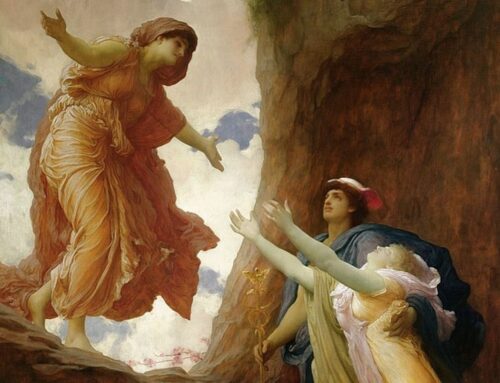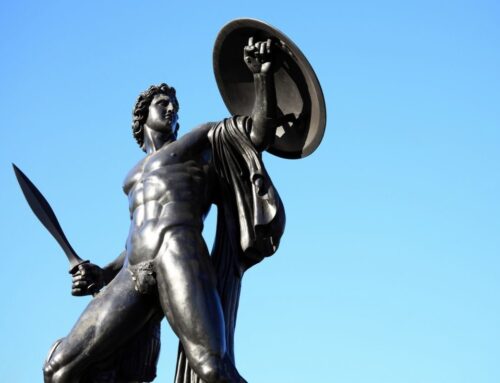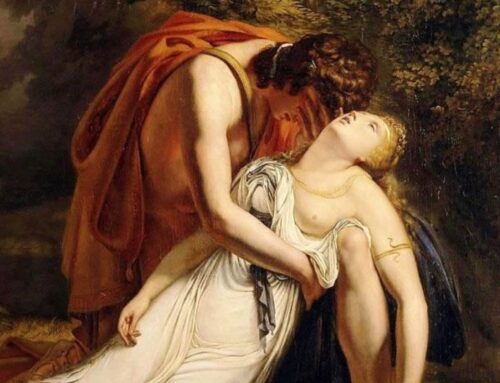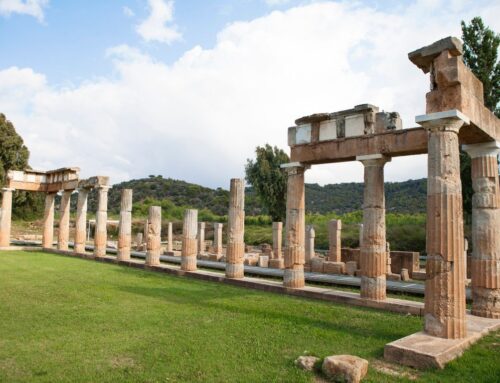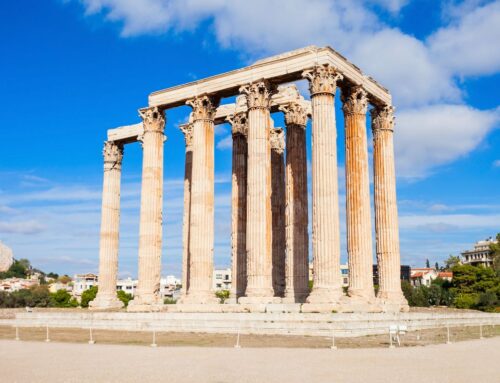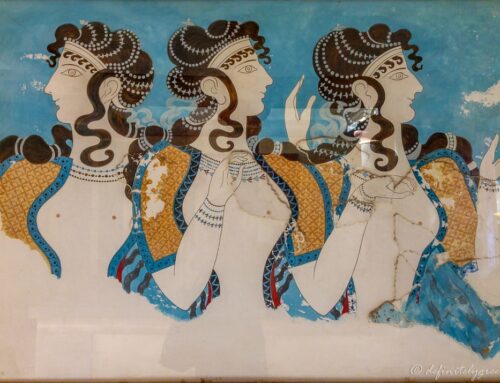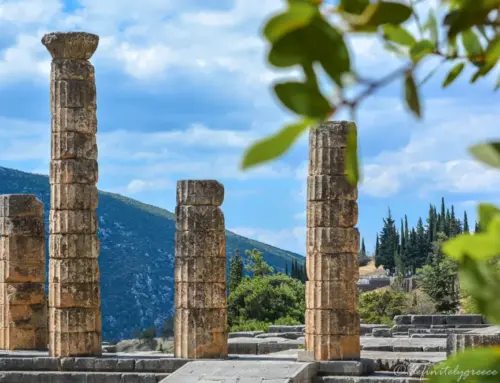The Greek Female Philosophers You Really Should Not Ignore
The Greek Female Philosophers You Really Should Not Ignore
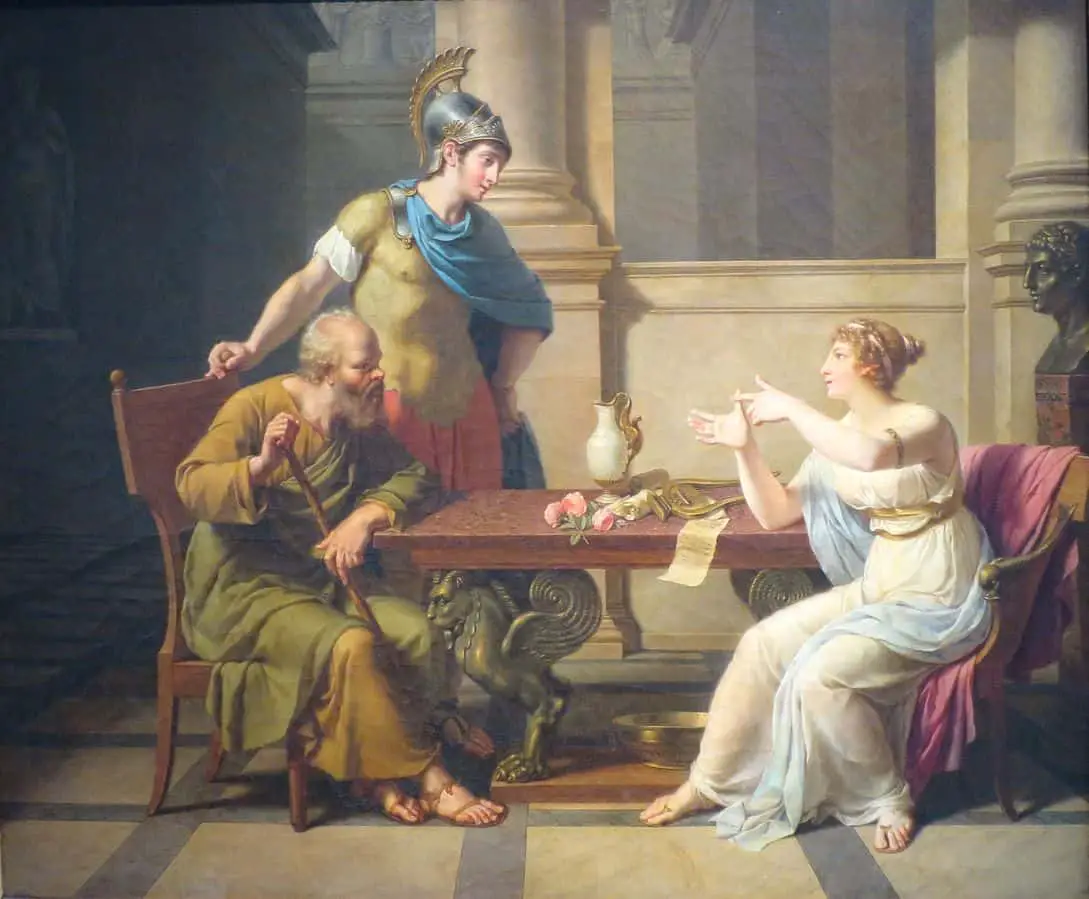
☞ Table of Contents:
By the end of this list, try to remember at least one Greek female philosopher to bring up next time someone asks! Did you know that it wasn’t only men who were philosophers in Ancient Greece? Although none of their books have survived, there were a lot of great Greek female philosophers that loved ( philo– ) the wisdom ( -sophia). There are clear references to their existence and the influence they had on the works of some of the most famous Greek philosophers like Plato, Pythagoras or Socrates.
Philosophers in Ancient Greece were the first to attempt to rationalize their perception of nature and the world. Until then, the human kind used mythology and magic to explain the physical phenomena and how the world had been created. In the 7th century B.C. in all Hellenic cities of the Mediterranean and especially in Athens a quite radical approach to explaining the world began; one that used reason and evidence to do so. Their thoughts, experiments and work remarkably changed the way that people understood the world and themselves and became the introduction of scientific thinking for the Western Civilization.
As wise as these Ancient Greeks were, we can’t deny that, there was one major fault that they all had in common. They believed that women were inferior creatures compared to men and that their prospects were extremely limited. Women were excluded from social and political life and the majority were confined to a life at home and bearing children. Very few women philosophers managed to defy all conventions and pursue knowledge for themselves. Apart from their natural curiosity and intelligence, they had to be audacious, persuasive and persistent.
Let’s get to know some of these remarkable Greek female philosophers of Ancient Greece:
Themistoclea
Themistoclea of Delphi (or Aristoclea or Theoclea) lived in the 6th century B.C. and was a priestess in Delphi.
Themistoclea distinguished herself among the women philosophers for her knowledge on mathematics and she taught inside the temple of Apollo in Delphi to whomever had the willingness to learn. According to the tradition she loved geometry so much that she decorated the Temple of Apollo with geometric shapes.
Pythagoras referred to her as his teacher and she is believed to have taught him ethics, geometry and numerals. He had such respect for his teacher Themistoclea that later on he accepted women in his School as students and teachers as well. Although Themistoclea was well known during her time there is barely any information about her that has survived.
Theano
Theano was born in 546 B.C. in Croton, a Hellenic city in South Italy. She was already known for her theories and lessons when she met the then thirty-year-older, Pythagoras. She was fascinated by his mysterious and wise teaching so much that she became his student and wife.
She was a great mathematician, astronomer and cosmologist of the 6th century B.C. She is considered to have formulated the Theorem of the Golden Mean, of the golden number “φ” which had a capital role in the discovery of physical laws and is frequently used in the construction of buildings. She is also credited with the development of the theorem of the Harmony of Numbers.
Theano and Pythagoras were the most important spiritual couple of the 6th century, and even after her husband’s death, Theano continued her teachings and her search for wisdom. She left the Magna Graecia (meaning Great Greece = South Italy) and with her five children settled on the island of Samos. She kept on the Pythagorean tradition with her lessons, her research and the administration of Pythagorean schools.
Myia
Myia was also born in Croton in the 6th century B.C. and she was one of Theano’s and Pythagoras’ five kids.
She and her siblings were educated at the School of Pythagoras. They were taught mathematics, how to practice moderation in all things and to worship the God Apollo. Myia held a strong reputation for her religious behavior which became an example for all.
Myia is best known for the Letter to Phyllis, which is attributed to her. The writer of the letter describes to a friend named Phyllis how to raise and care for an infant. All needs of a baby must be fulfilled in harmony. The caretaker must be moderate – the Pythagorean ideal behavior. She recommends moderation in food, clothing and hygiene.
She was married to another Pythagorean, Milon of Croton, a famous athlete. When a furious crowd tried to expel the Pythagoreans from Croton setting fire to their house during a meeting, 38 Pythagoreans died, including Pythagoras and Milon. It is not sure if Myia lost her life in that fire or followed her mother, Theano, to Samos.
Aspasia
Aspasia, born in 470B.C. in Miletus, was known for her beauty and because of the fact that Pericles, the great politician of Athens fell in love with her.
But Aspasia was also one of the most well-educated women at the time and due to her intelligence, notable philosophers like Socrates wanted to be in her company and converse with her.
She spent most of her adult years in Athens where she became the center of the intellectual life. Her house was always open to artists, philosophers and politicians. Despite her free style of life, Athenians often brought their wives along so they could listen to Aspasia’s speeches and advice.
When she was 25 years old she met the 50-years old Pericles. He was dazzled by the extremely charming and intelligent young lady. Soon after they moved in together, a fact that shocked the conservative society of Athens. Some admired their audacity and others – mostly the political enemies of Pericles – hated them to death. This didn’t change the fact that she played an important role beside Pericles and influenced his decisions dramatically. Her fame survived through the centuries as one of the most influential personalities of Ancient history.
Painting depicting Aspasia and her husband Pericles.
Aspasia debating with Socrates.
Hipparchia
Hipparchia, the Cynic, was the first liberated woman in history.
She was born on 328 B.C. in Maroneia, a city of Thrace in Northern Greece. Her brother was a cynic philosopher and she also attended the Cynic School of Thebes. She was the first female student of the School and it was there she met Crates, her brother’s friend.
Crates was also a philosopher whose style of living was very simple; he owned nothing but the absolute necessities required to live by. Although he came from a wealthy family he lived poor and hardy, anticonformist to all social conventions of his time. Hipparchia adored his philosophy and his lifestyle . She fell madly in love with him and wanted by all means to follow him. In vain her parents tried to change her mind. Eventually she married him and followed him into his unconventional lifestyle.
We could say that Hipparchia with her free spirit was the first feminist. She lived in total equality with her partner. She even threw away her feminine clothes and they both lived like hippies of their time.
Hipparchia and Crates with a box of her possessions.
Leontion
Leontion was a beautiful wise lady that lived in the 4th century B.C. and was a student of philosopher Epicurus.
Her writings have all been lost except from a fragment of one of her letters addressed to her teacher, the great Epicurus, which is a testament to her importance in his Philosophical School.
Very little is known about her. Some sources claim that she was an Hetaera – the upper class of well-educated prostitutes that kept company to wealthy citizens and had a lot of privileges compared to other women- and she may also have been the companion of Epicurus or another philosopher named Metrodorus. Whatever her status may have been Leontion remains famous after her death for criticizing the great Theophrastus the successor of Aristotle at the Lyceum.
Arete
Arete lived in the 5th century B.C., around the same time that Socrates lived and taught. Her father Aristippos founded the Philosophical School of Cyrene. Even after one thousand years historians referred to Arete as a valuable knowledge source as she has written more than forty books and was a teacher to more than 110 philosophers.
Her son Aristippos was also a philosopher and kept on the family tradition as principal of the Cyrenean School. He was named mitrodidaktos (mother-taught in Greek) because he was taught philosophy by his mother, which was quite rare at the time.
Diotima
Diotima (5th century B.C.) was a priestess from Mantineia, Peloponnese.
Her name literally means She who honors Zeus and she is referred to in the Symposium of Plato as a wise woman that taught Socrates. Socrates acknowledged that he had learned by Diotima the mysteries of Love and Passion as a motive for Beauty and Truth.
According to the ancient historian Xenophon, Diotima had extended knowledge on Pythagoreian numerals and difficult geometric theorems. In the Symposium we are also informed that the skills Diotima possessed didn’t end with her love for wisdom and mathematics. Plato claims that under her instructions the Athenians managed to postpone the coming of the plague for a decade.
In modern times the name Diotima means the quest for philosophical, scientific and social answers and symbolizes the equality of men and women, as she is the only woman referred to in the male-dominated Symposium of Plato.
Hypatia
Hypatia (370 A.C. – 415 A.C.) was one of the most important women philosophers of Alexandria. She was respected and admired by all intellectuals of her time; she finally found death from fanatic Christians.
She was a daughter of the mathematician and astronomer Theon. Her father satisfied her eagerness to learn and her endless curiosity. She studied in famous Schools of Athens and returned to teach mathematics, astronomy and philosophy in Alexandria. She invented many scientific instruments like the astrolabe and the hygrometer. Hypatia attracted many students from all over the Mediterranean area who wanted to be taught by the best mathematicians of their time. Unfortunately political and religious conflicts caused her violent death as her co-citizens believed she influenced the governor of Alexandria to deny collaboration with the Christian bishop. For many, the cruel death of Hypatia is the symbolic end of the classical world.
Fictional representation of what the assault on Hypatia would have looked like.
Sosipatra
Sosipatra was born in the time of late Antiquity at the second half of the 4th century A.C. in the Hellenic city of Asia Minor Ephesus.
She is a very unique case of women philosophers. She was a girl that would reveal supernatural abilities, get philosophical knowledge and practice Theourgy. It is said that Theourgy is the practical side of Philosophy, as someone exploits the real powers of nature and his consciousness.
Sosipatra lived in times of great changes; she was initiated in Chaldean Wisdom and later on in Neo-Platonist Philosophy. They described herself as a person full of an inherent nature that loves wisdom, teaches and foretells the future. The historian Eunapios referred to her as the only woman in the long list of men philosophers of her time.
- Ancient Greek female philosophers lived in very difficult and oppressive times when women were deprived of any rights or privileges. Nevertheless they managed to show their personalities and their work on the world, to travel seeking for wisdom and to carve their names with golden letters in history. Don’t you think that these wise ladies are very inspiring?
*Disclaimer: This page includes affiliate links. If you decide to book something through one of them, I might get a little bonus, but it won't cost you anything extra.*

